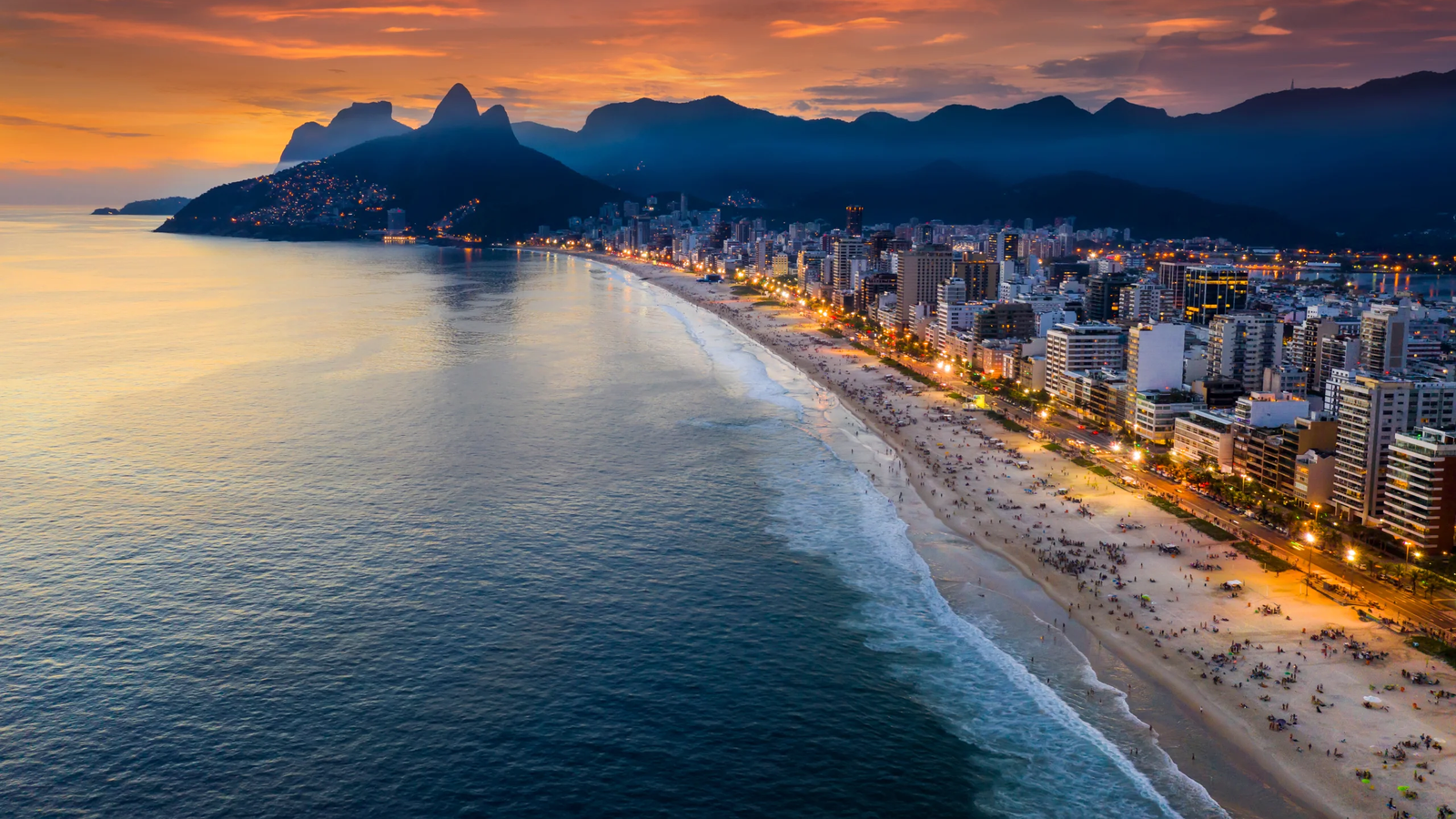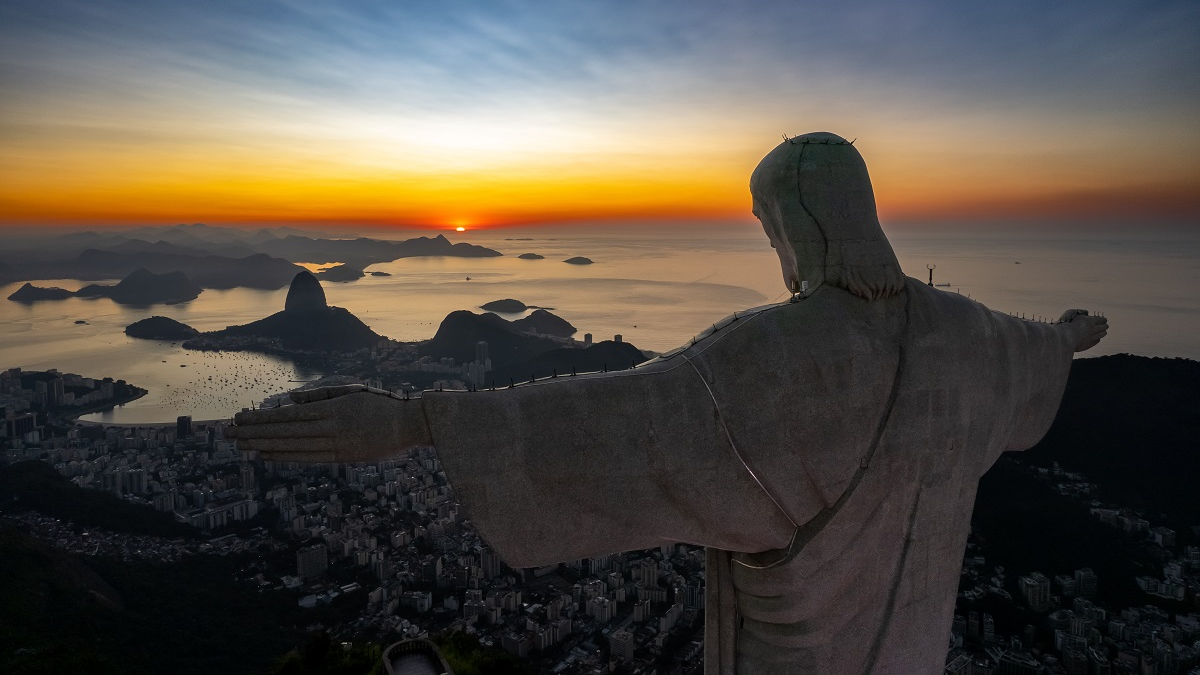The Rio de Janeiro Carnaval is one of the most iconic and vibrant festivals in the world, drawing millions of visitors to Brazil’s lively city each year. Known for its dazzling parades, samba music, and elaborate costumes, this event is a celebration of Brazilian culture and creativity. Held annually before Lent, the festival transforms the streets of Rio into a pulsating sea of color and rhythm, offering an unforgettable experience for both locals and international tourists. The allure of the Rio de Janeiro Carnaval lies not only in its grand scale and exuberance but also in its ability to bring people together from all walks of life to celebrate joy, freedom, and unity.
What sets the Rio de Janeiro Carnaval apart from other festivals is its unique blend of tradition and modernity. The highlight of the event is the Samba Parade, where samba schools compete in the Sambadrome, showcasing their talent and creativity in a spectacular display. Tickets for the Sambadrome can range from $50 to $500 USD, depending on the seating and the day of the parade. Beyond the parades, street parties known as “blocos” offer a more informal and accessible way to join in the festivities, with music, dancing, and revelry spilling into every corner of the city. Whether you’re watching the grand parade or dancing in the streets, the Carnaval do Rio de Janeiro promises an experience like no other, making it a must-visit for any travel enthusiast.
Historical and Cultural Background Of Rio de Janeiro Carnaval

Origins
The Rio de Janeiro Carnaval has its roots in the ancient European tradition of celebrating the arrival of spring with feasts and merriment. The festival was brought to Brazil by Portuguese colonists in the 18th century, where it evolved into a unique cultural phenomenon. Initially, it was a more subdued affair, but over the years, it transformed into the vibrant and extravagant celebration we know today. The introduction of African rhythms and dances, particularly samba, played a crucial role in shaping the Carnaval’s distinctive character. This fusion of cultures has made the Carnaval a symbol of Brazil’s rich and diverse heritage.
Cultural Significance
Carnaval is more than just a festival; it is a vital part of Brazilian identity and cultural expression. The Rio de Janeiro Carnaval serves as a platform for showcasing the country’s artistic talents, particularly through the samba schools that compete in the famous parades. These schools spend months preparing elaborate floats and costumes, with some investing up to $1 million USD in their presentations. The event is deeply embedded in Brazilian traditions, with customs such as the crowning of the “King Momo” and the “Queen of Carnaval,” who lead the festivities. Beyond the parades, the Rio de Janeiro Carnaval fosters a sense of community and joy, as people from all backgrounds come together to celebrate life and freedom. This cultural significance makes the Rio de Janeiro Carnaval a must-see event for anyone looking to experience the heart and soul of Brazil.
Highlights and Visitor Expectations

Main Attractions
The Rio de Janeiro Carnaval is renowned for its spectacular main attractions that captivate visitors from around the globe. The centerpiece of the festival is the Samba Parade, held at the Sambadrome, where samba schools compete with breathtaking floats, dazzling costumes, and electrifying performances. Tickets for this event range from $50 to $500 USD, depending on the seating and day. In addition to the parade, the city hosts numerous “blocos,” or street parties, where locals and tourists alike dance to live music in a more informal setting. These blocos are free to attend and offer a more intimate glimpse into the local culture.
Unique Features
Visitors should not miss the unique features that make the Rio de Janeiro Carnaval truly special. One such highlight is the “Feijoada,” a traditional Brazilian feast of black beans and pork, often served at samba school gatherings. Another must-see is the “Baile de Gala,” a glamorous ball where attendees dress in elaborate costumes, often costing hundreds of dollars. These events provide a deeper understanding of Brazilian traditions and hospitality.
Atmosphere
The atmosphere of the Rio de Janeiro Carnaval is nothing short of electric. The city buzzes with energy as music fills the air and vibrant colors paint the streets. The spirit of joy and celebration is contagious, with people dancing, singing, and reveling in the moment. The festival’s lively and inclusive vibe ensures that everyone feels welcome, making it an unforgettable experience for all who attend.
Audience
The typical crowd at the Rio de Janeiro Carnaval is a diverse mix of locals and international tourists, all eager to partake in the festivities. The event attracts people of all ages and backgrounds, from families enjoying the parades to young travelers seeking adventure in the street parties. Notable attendees often include celebrities and public figures who come to experience the magic of the Carnaval firsthand. This diverse audience adds to the festival’s dynamic atmosphere, creating a melting pot of cultures and experiences.
Event Information Details

Dates and Duration
The Carnaval typically takes place between February and March , leading up to Ash Wednesday (in 2025 it will happen from March 1st to March 5th). The festival spans over five days, with the main events occurring from Friday to Tuesday. The Samba Parade, the highlight of the Carnaval, is held on Sunday and Monday nights, starting at 9 PM and continuing into the early hours of the morning. It’s essential to check the specific dates each year, as they can vary slightly based on the liturgical calendar (in 2025 it will be held on March 2nd, 3rd and 4th).
Venue Details
The heart of the Carnaval is the Sambadrome Marquês de Sapucaí, a purpose-built parade area designed by the renowned architect Oscar Niemeyer. Located in the downtown area of Rio de Janeiro, the Sambadrome features a long parade runway flanked by grandstands that can accommodate up to 90,000 spectators. The venue is known for its vibrant atmosphere and excellent views of the parades. In addition to the Sambadrome, street parties and blocos take place throughout the city, from the historic neighborhoods of Lapa and Santa Teresa to the famous beaches of Copacabana and Ipanema.
Nearby Attractions
While in Rio de Janeiro for the Carnaval, visitors can explore a variety of local landmarks and attractions. Some must-see sites include:
- Christ the Redeemer: One of the New Seven Wonders of the World, offering panoramic views of the city.
- Sugarloaf Mountain: A granite peak with cable car rides providing stunning vistas of Rio’s coastline.
- Copacabana Beach: A world-famous beach perfect for sunbathing and people-watching.
- Lapa Arches: A historic aqueduct and vibrant nightlife district.
Tickets
Tickets for the Samba Parade at the Sambadrome are available for purchase several months in advance, typically starting in October. There are various fare options to suit different budgets:
- Grandstand Seats: Prices range from $50 to $150 USD, offering a lively atmosphere and good views.
- Allocated Chairs: Priced between $100 and $200 USD, providing more comfort and a reserved spot.
- VIP Boxes: Costing $500+, these offer premium views, catering, and exclusive amenities.
Early bird discounts and special offers are often available for those who purchase tickets well in advance, so it’s advisable to book early to secure the best deals and seating options.
General Visitor Considerations

Getting There
Traveling to the Rio de Janeiro Carnaval is convenient, with several transportation options available:
- Air Travel: Rio de Janeiro is served by two major airports, Galeão International Airport (GIG) and Santos Dumont Airport (SDU), both offering domestic and international flights.
- Public Transport: The city’s metro and bus systems provide affordable and efficient ways to reach the Sambadrome and other event locations. A single metro ticket costs around $1 USD.
- Taxis and Ride-Sharing: Taxis and services like Uber are widely available and offer a more comfortable way to navigate the city, especially late at night.
Accommodation
When choosing accommodation, consider staying in neighborhoods close to the event venues for convenience:
- Botafogo: Known for its stunning views of Sugarloaf Mountain, Botafogo offers a mix of hotels and hostels, providing a safe and vibrant atmosphere.
- Copacabana and Ipanema: Famous for their beautiful beaches and lively nightlife, these areas offer a variety of hotels and vacation rentals, with prices ranging from $50 to $300 USD per night.
- Leblon: An upscale neighborhood adjacent to Ipanema, Leblon provides luxurious accommodations and a more tranquil environment, ideal for families and those seeking a quieter stay.
- Lapa: Known for its vibrant nightlife, Lapa offers a lively atmosphere and is a short distance from the main events, with a range of budget-friendly options.
Safety Tips
To ensure a safe and enjoyable experience, consider the following tips:
- Stay Alert: Keep an eye on your belongings, especially in crowded areas.
- Travel in Groups: It’s safer and more fun to explore the festivities with friends or fellow travelers.
- Hydration and Sun Protection: Drink plenty of water and use sunscreen to protect against the sun.
Weather Considerations
The Carnaval takes place during the Brazilian summer, with typical weather conditions being hot and humid. Daytime temperatures can range from 75°F to 95°F (24°C to 35°C). To stay comfortable:
- Clothing: Wear light, breathable fabrics and comfortable shoes for walking and dancing.
- Rain Gear: Occasional rain showers are possible, so carrying a light raincoat or umbrella is advisable.
Conclusion

The Rio de Janeiro Carnaval offers a truly unique and unforgettable experience, blending vibrant culture, music, and dance in a celebration like no other. From the dazzling Samba Parade at the Sambadrome to the lively street parties and blocos, the festival provides a diverse array of attractions that cater to all tastes and interests. Visitors can immerse themselves in the rich traditions of Brazil, enjoy the warmth and hospitality of its people, and witness the incredible creativity and passion that define this world-renowned event.
If you’re seeking an adventure filled with color, rhythm, and joy, the Rio de Janeiro Carnaval is a must-see. Whether you’re a seasoned traveler or planning your first trip to Brazil, attending this festival will leave you with memories to cherish for a lifetime. The energy and spirit of the Carnaval are contagious, and experiencing it firsthand is an opportunity not to be missed.
Plan your visit to the Rio de Janeiro Carnaval and explore the vibrant culture of Brazil. Embrace the excitement, indulge in the festivities, and discover the magic that makes this event a global phenomenon. Your journey to the heart of Brazilian culture awaits!
FAQ About Carnaval in Rio de Janeiro
When does the Carnaval take place?
The Carnaval do Rio de Janeiro typically occurs in February, leading up to Ash Wednesday. The exact dates vary each year based on the liturgical calendar, so it’s essential to check the specific dates in advance.
How can I purchase tickets for the Samba Parade?
Tickets for the Samba Parade at the Sambadrome are available for purchase online several months in advance, usually starting in October. Prices range from $50 to $1,000 USD, depending on the seating and amenities. Early bird discounts may be available for those who book early.
What should I wear to the Carnaval?
The Carnaval is a colorful and festive event, so casual and vibrant attire is encouraged. Many attendees wear costumes, especially during street parties. Comfortable shoes are recommended for walking and dancing, and don’t forget sunscreen and a hat for sun protection.
Is the Carnaval family-friendly?
Yes, the Carnaval offers activities and events suitable for all ages. While some street parties may be more adult-oriented, the parades and many blocos are family-friendly. It’s advisable to research specific events to ensure they align with your family’s preferences.
What are the best neighborhoods to stay in during the Carnaval?
Popular neighborhoods for accommodation include Botafogo, Copacabana, Ipanema, and Leblon. These areas offer a range of hotels and vacation rentals, providing easy access to the main events and attractions.
How can I stay safe during the Carnaval?
To ensure a safe experience, keep an eye on your belongings, travel in groups, and stay hydrated. Use reputable transportation options like taxis or ride-sharing services, and be mindful of your surroundings, especially in crowded areas.
EXTERNAL REFERENCES
For more detailed information and updates about the Carnaval do Rio de Janeiro, consider visiting the following official websites:
- Rio Carnaval Official Website: Visit Rio Carnaval
This site provides comprehensive details about the event, including schedules, ticket sales, and parade information. - LIESA (Liga Independente das Escolas de Samba do Rio de Janeiro): Visit LIESA
The official organization responsible for the Samba Parade, offering insights into the participating samba schools and parade logistics. - Visit Rio (Official Tourism Website of Rio de Janeiro): Visit Rio
A valuable resource for tourists, featuring information on accommodations, attractions, and travel tips for those attending the Carnaval.
These links will guide you to the most accurate and up-to-date information, helping you plan your visit to the Carnaval do Rio de Janeiro with ease.






